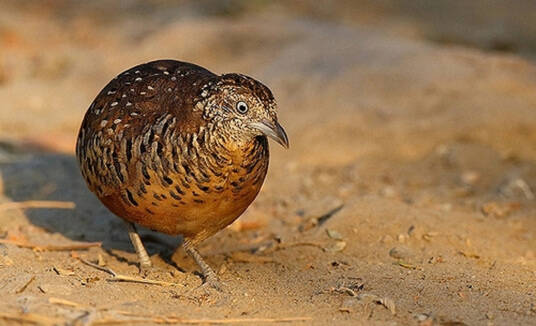Ammoperdix griseogularis
IUCN
LCBasic Information
Scientific classification
- name:Ammoperdix griseogularis
- Scientific Name:Ammoperdix griseogularis,See-see Partridge
- Outline:Landfowl
- Family:Chickeniformes P.family P.Genus
Vital signs
- length:22-25cm
- Weight:150-250g
- lifetime:No textual research information is available
Feature
Distribution and Habitat
It is distributed in Eurasia and northern Africa (including the whole of Europe, Africa north of the Tropic of Cancer, the Arabian Peninsula, and Asia north of the Himalayas, Hengduan Mountains, Minshan Mountains, Qinling Mountains, and Huaihe River). The Indian subcontinent and the southwest of China (including India, Bangladesh, Bhutan, Sikkim, Nepal, Pakistan, Sri Lanka, Maldives and the southeast region of Tibet, China, etc.)
Adapted to living in the scorching heat of the desert sun, one can easily survive without water for at least six days.
Appearance
The body length is 22-25 cm, the wingspan is 39-41 cm, and the weight is 150-250 grams. The body is fat, smaller than a pheasant, runs fast, hides fast, rarely flies, and gets tired quickly when flying.
Details
Ammoperdix griseogularis and See-see Partridge. Usually living in pairs, seeds make up 80% of the bird's diet in summer, with other foods including greens, berries and insects. Considered monogamous, females usually breed in April, laying 5-7 eggs per litter, with nests embedded or hanging from rocks and covered with plants for shelter. This ground-dwelling bird can fly briefly when it is disturbed, preferring to run quickly or climb to safety.

Listed on the International Union for Conservation of Nature (IUCN) 2016 Red List of Threatened Species ver 3.1 - Not Threatened (LC).
Protect wild animals and eliminate wild meat.
Maintaining ecological balance is everyone's responsibility!








